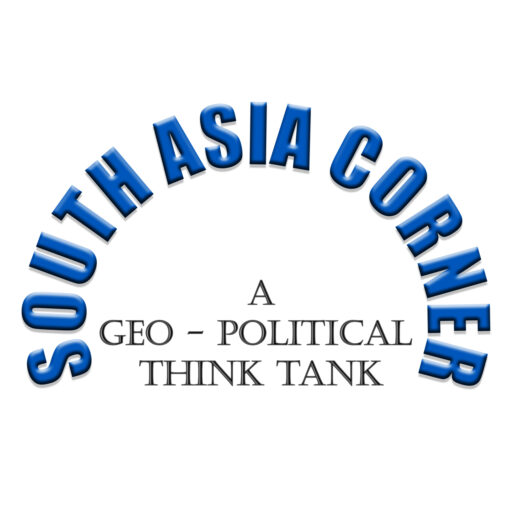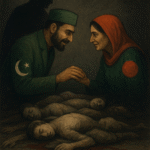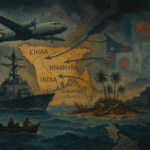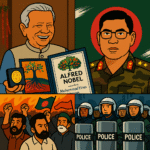Introduction
In the last 74 odd years since the inception of this concocted statehood of Pakistan, none of its Prime Ministers has been able to serve a full term of five years. How ironic is that! The same fate had to be embraced by the playboy turned Radicalised neo Muslim Imran Khan. He was trying to play cricket googly, yorkers and bouncers with the infamous Pakistan Army and its deep state, which has resulted in him being thrown out of the office in a humiliating way.
The PTI and its government have been ousted from power with a military-backed no-confidence vote in the Pakistani Parliament. What is more bizarre is that the new incoming Prime Minister is a known philanderer who is believed to have had more than 3-5 wives and still keeping a herd of concubines and hosts of ladies in waiting.
End of Imran Khan
Imran Khan’s rise to power has also been a military-backed eyewash of democracy in vogue. In reality, from 1956 onwards, this has been a recurring and common phenomenon in Pakistan’s government and its politics. Imran Khan was seen toiling with religious bids rolling in his fingers whilst meeting world leaders to prove his sudden shift from his hay days of polygamous lifestyle to a pious politician has not been able to satisfy his backers sitting in the cosy ante’ rooms at the GHQ in Rawalpindi. He has infuriated the Military Juntas, and the rug of the power was abruptly pulled from under his feet.
A beggar will believe that, To not to see him falling on the swords of the Pakistan Army any time soon, and many erudite observers from all around the world augment that he will be either jailed or sent in exile any time soon.
Who are we
South Asia Corner is a segment of ingenuine news and views portal. – Presenting its readers a three hundred sixty degrees exposition of the events, trends, latest geopolitical, foreign policy alliances with a nuanced approach of a briefing with authenticity and quintessentially plain language for the familiar readers and the academic knowledge thirsty intellectual academia. We are on the day, every day, and an intrust cradle of exposé.
History
South Asia comprises countries that make up the southern region of the continent of Asia. Southern Asia is bordered to the south by the Indian Ocean, to the west by West Asia, and to the South by Southern Asia. The countries that makeup South Asia include Sri Lanka, Pakistan, Afghanistan, Bangladesh, Nepal, India, Bhutan, and the Maldives. South Asia’s history can be traced back to four stages. The first stage is the ancient era that dates back to 3300 BCE through 1300 BCE, when the Indus Valley Civilisation began to spread in the northwestern parts of South Asia. The second stage is the classical era when Indo-Iranian speaking pastoralists (nomadic herders) migrated into the area from central Asia. The third stage was the medieval period when Islam came to South Asia through Muhammad’s conquest of Sindh and Multan. The final stage is the current modern era which began in the 18th Century when the British East India Company had control over most of Asia to the 20th Century when most countries gained independence. South Asia has a population of around 1.8 billion people.







Can you be more specific about the content of your article? After reading it, I still have some doubts. Hope you can help me.
Thank you for your sharing. I am worried that I lack creative ideas. It is your article that makes me full of hope. Thank you. But, I have a question, can you help me?
Thanks for sharing. I read many of your blog posts, cool, your blog is very good.
Can you be more specific about the content of your article? After reading it, I still have some doubts. Hope you can help me.
Your article helped me a lot, is there any more related content? Thanks! https://accounts.binance.info/en-IN/register?ref=UM6SMJM3
Your point of view caught my eye and was very interesting. Thanks. I have a question for you.
Your point of view caught my eye and was very interesting. Thanks. I have a question for you.